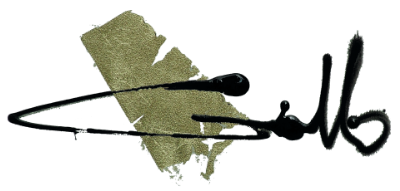You are using an outdated browser that is no longer suitable for modern web standards.
Please update (or change) your browser to view our site as it is intended to be seen. Thank you.
Interview by Keri Gonzato for Cooperazione Switzerland
Devakrishna Marco Giollo, painter, artist and spiritual searcher, brings out on his canvases the new awareness he has gained through meditation.
Devakrishna Marco Giollo is an intense person and so is his life. By rewinding the film and going back into the past, we see a handful of crucial moments that have defined the course of his existence in a radical way. The first epiphany was when he discovered that he loves art.
"At the time I wanted to study architecture, but I soon realized that although my sensitivity was captured by the creative side of the profession, all the numbers, formulas and calculations that were involved in it were not for me," says Devakrishna. At that point he enrolled to the CSIA [college in Lugano for arts and applied arts, Ed.], where he felt immediately at home: "I was lucky enough to have brilliant teachers, including Bruno Monguzzi and Nag Arnoldi, who left an indelible impression on my way of making art."
Follows a course for artists, the only one which did not issue a diploma at the end and where the only outlook was to become an artist or an arts teacher. "Many left the course, from about 40 in the first year only eight managed to remain to the end." Devakrishna has never been afraid of an uncertain future; he feels that this is the road to take. Very soon he discovers what he likes to do with the materials and the brushes, and the first paintings are born: they are saturated, stratified and at the same time very aesthetic and harmonious, aspects that continue to characterize his large works today.
One of these paintings has just been selected for a contest, the Swiss Artist Contest 2012, with a collective exhibition organised by Kunst Forum International. But to discover what is hidden behind the multiple layers of paint and objects that embellish his works today, we must again take a jump back and return to the time he was 18: "When I packed my suitcases, it was not even that much in reality, I simply left Ticino [the canton he grew up in, ed.] which started to become a bit too tight for me."
Devakrishna has always been in search of that hidden core of truth. Art for art's sake has never interested him, so after school he hangs brushes and spatulas on the wall and leaves to find himself. For a long time he lives on the road, motivated by a burning passion that pushes him to try out life in all its forms. When he arrives in India, in 1976, he comes in contact with the experience of meditation and his life undergoes a new change: "After experiencing everything possible on the outside, I started a journey towards the inside." In India he meets Osho, who will become his spiritual master, and stops in his ashram in Pune where "the energy was very strong and helped people awaken their own awareness."
In that period he receives a new name that becomes a symbol of his path as a spiritual seeker. The name that has accompanied him from that moment is Devakrisha, which in Sanskrit means 'divine consciousness'.
Up until 1998 he forgets all about painting and devotes himself entirely to meditation and music, "that allow me to express myself in a more immediate and fresh way." He lives in India, but also in Australia, South America and Asia. From then on, the meaning of his search takes on an even clearer definition, a meaning that today is revealed in his large monochrome paintings.
The year 2000 marks another important transition with his return to Switzerland. Since then he has lived in Basel with his companion Meera in a beautiful house where they celebrate the 'worship of all what is beautiful'. In Basel he resumes to paint regularly, with the desire to experiment with his new awareness through visual art. While traveling the world he has collected fragments - coins, lace, jewelry, bottle caps, newspaper clippings. - that come to life again on his canvases.
These works are not fruit of an intellectual concept, but are born out of a space of meditation: "If I am at the mercy of emotions or expectations, I quit immediately, and will return my my studio only when I feel that space of inner peace again," he explains. "I want each of my gestures to be totally absorbed in the action of creativity."
When he creates, he transforms those objects and those cuttings, collected over the years, in light on his canvases. In this creative act the biggest magic happens: "Ugliness turns into beauty. At a symbolic level, on the outside, my art carries an ecological message and invites us to use offsets creatively to make the world more beautiful. At a deeper level, it is about transforming our inner world, about transcending negative and coarse emotions, and to return to the essence, through awareness and meditation." For Devakrishna there is a basic truth: "We first need to expose what we don't like, what we think is ugly and what we fear: only through acceptance can a real change begin."
What came out of Devakrishna's inner search is not surprising. His paintings, in front of which it is difficult to remain indifferent, are in fact intense and powerful.
Text by Keri Gonzato - Foto by Annick Romanski
